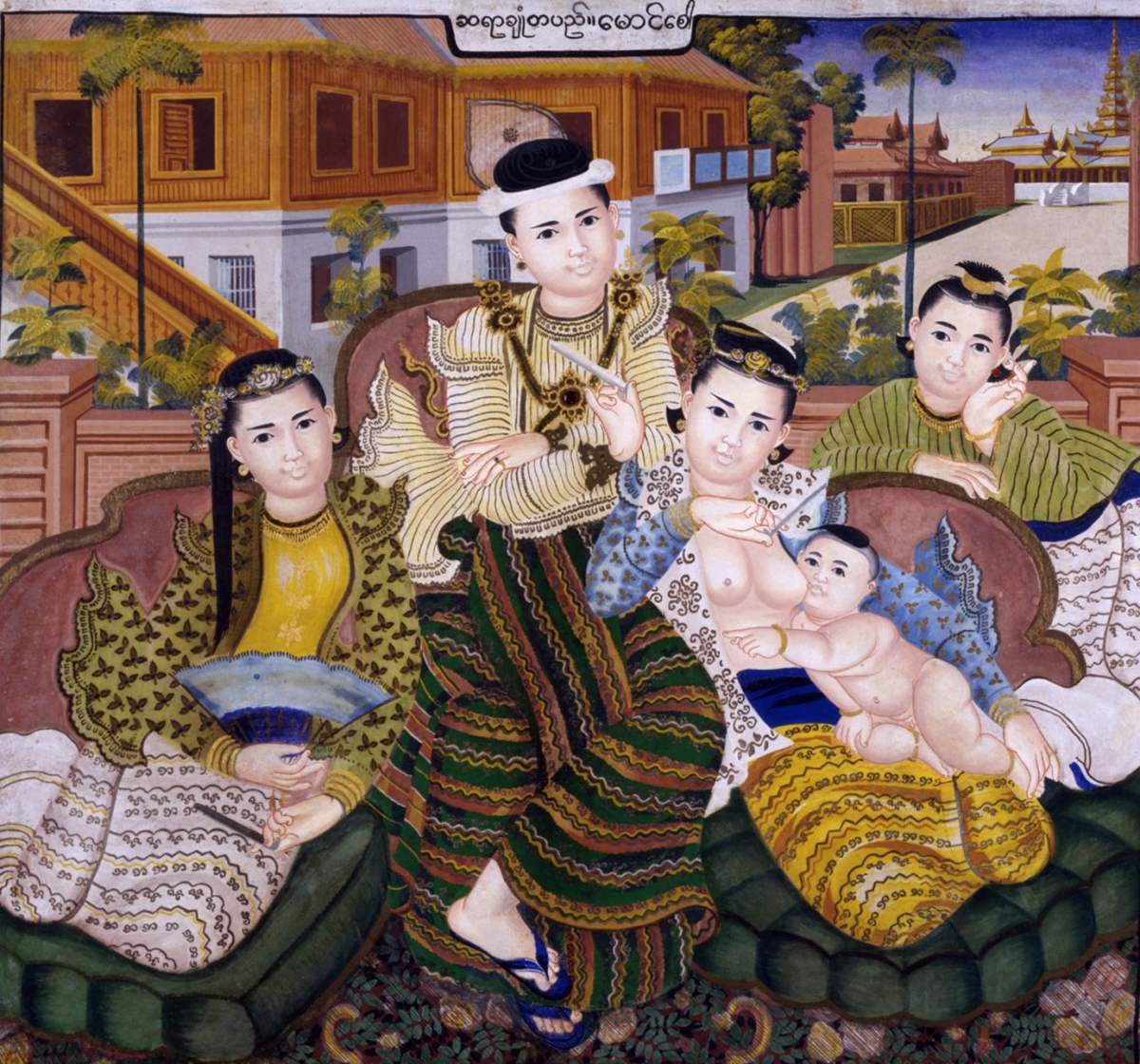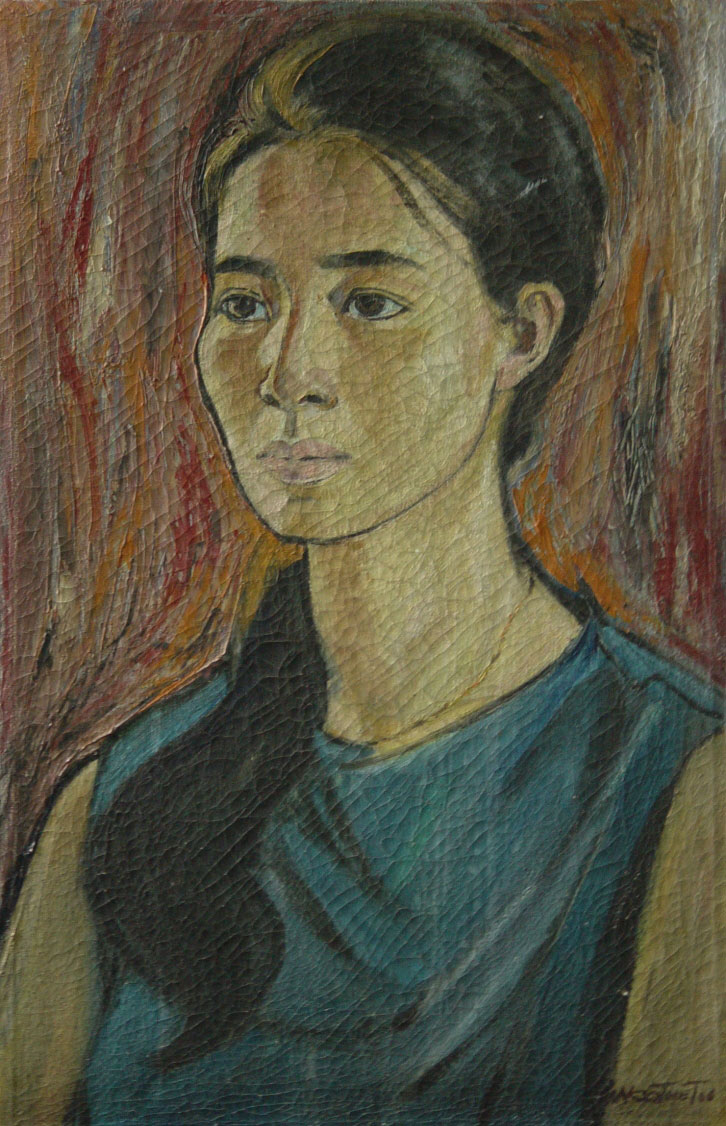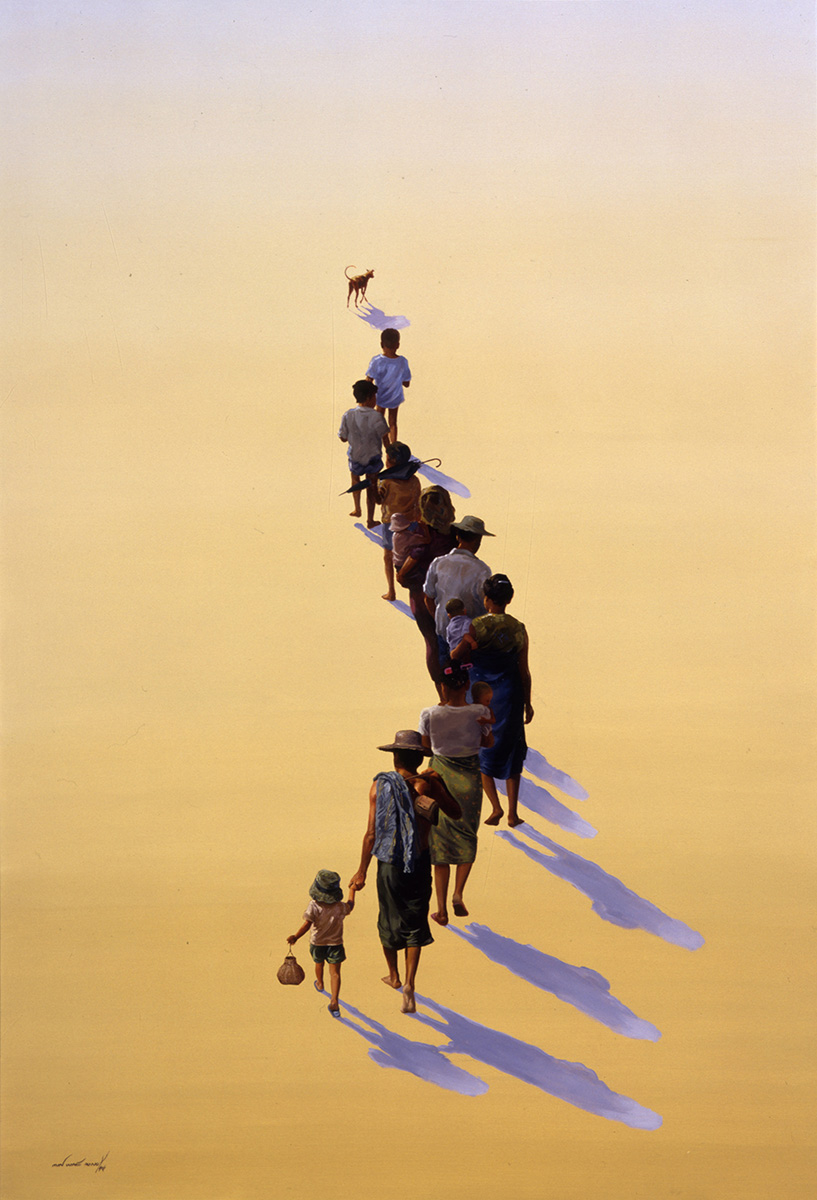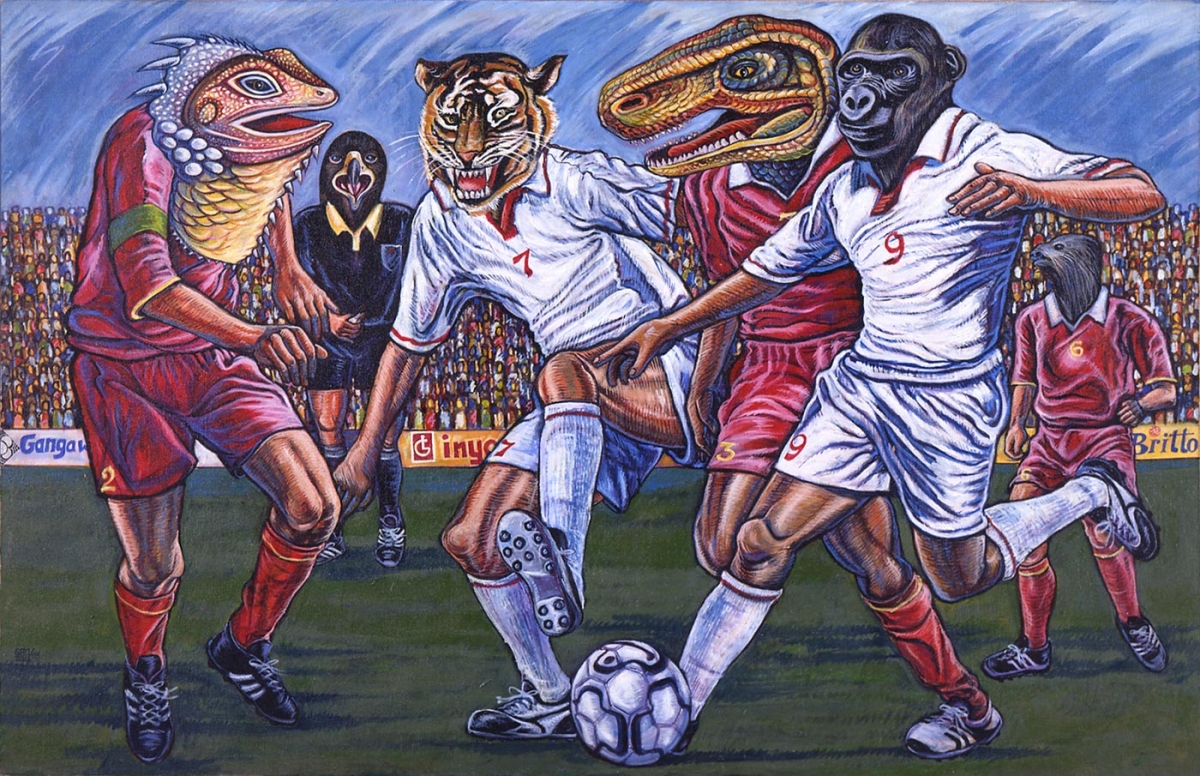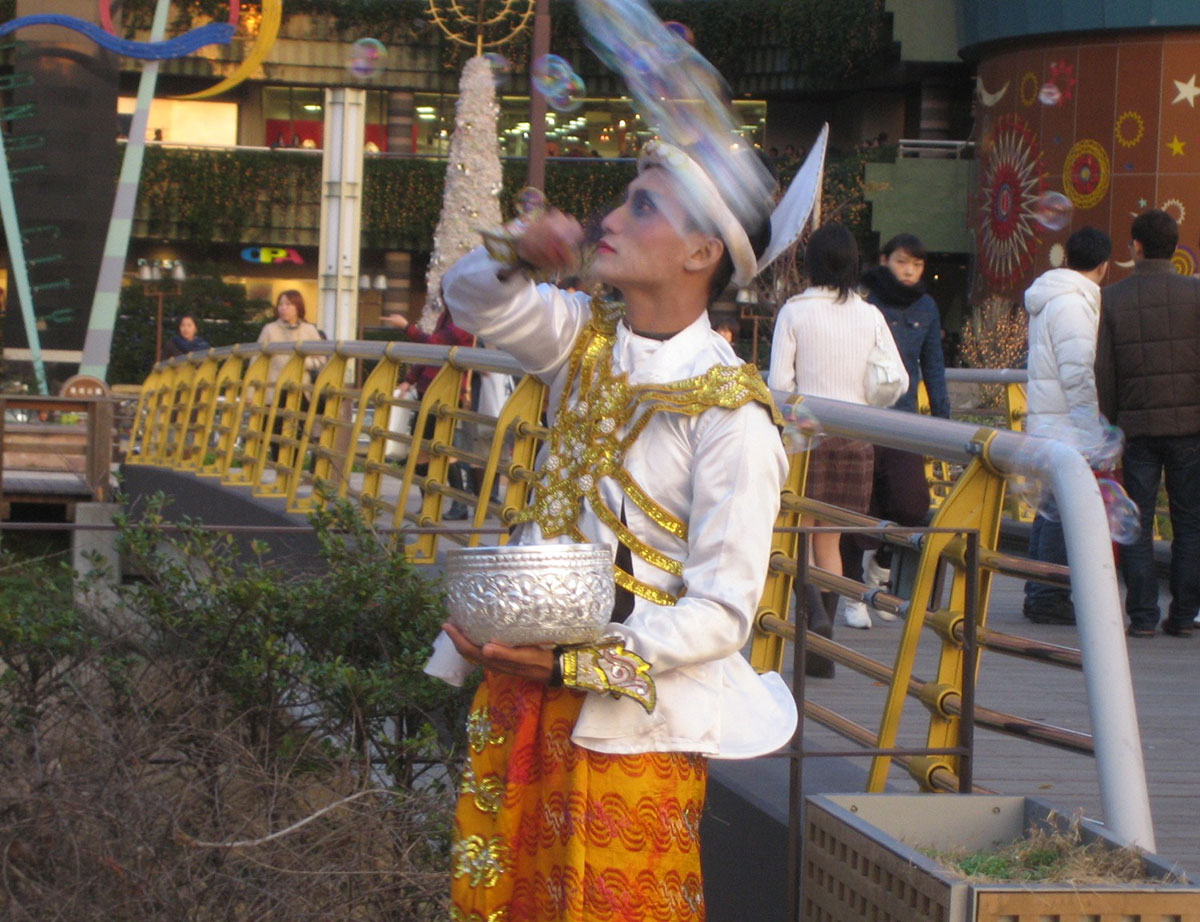Welcome to Art in Myanmar!
<p align=\"left\">In December 2016, Fukuoka and Yangon signed the sister-city affiliation. Commemorating the event, Fukuoka Asian Art Museum (FAAM) launched a new exhibition in August 2017, which looks back over the history of Myanmar art from the late 19th century to today.</p><p align=\"left\"><strong>Commemoration of the sister-city relationship between Yangon and Fukuoka. Welcome to Art in Myanmar!</strong><br><em>Fukuoka Asian Art Museum (<a href=\"http://faam.city.fukuoka.lg.jp\">faam.city.fukuoka.lg.jp</a>)<br>31 August 2017 - 9 January 2018</em></p>
Myanmar art has been included in the FAAM collections ever since the museum’s inception in 1999. FAAM, moreover, contributes to the cultural exchange between Japan and Myanmar by inviting artists from Myanmar to engage in creative activities in Fukuoka. Among its 2900 collections from 23 countries and regions in Asia, 71 works (36 artists) come from Myanmar. This commemorative exhibition presents various artworks including a Western-style painting of the last dynasty of Burma/Myanmar during the British era, a beautiful golden pagoda representing the Buddhist tradition of the nation, and contemporary artworks that critically observe the social issues of the country. The Myanmar artists’ works created in Fukuoka are also on display.
Western-style painting during the British Era
The entire country of Burma (present-day Myanmar) was colonized by the British in 1886 as part of the Indian colonial territory, resulting in the end of the Konbaung dynasty. The former court painters started to show their paintings of the royal family at religious ceremonies, such as cremation ceremonies for monks. A typical example of these paintings is Portrait of Royal Family by Saya Saw, in which the background is painted in Western style and perspective, with the figures in the foreground resembling traditional Myanmar puppets (see image 1). The facial expression of the figures became more realistic as the painters were influenced by photography. In the early 20th century, a Western-influenced modern style was developed by U Ba Nyan (1897-1945), U Ba Kyi (1912-2000), and others who had studied in Europe during the time of British influence.
Art after Independence
After Myanmar gained its independence in 1948, art infrastructures were developed through institutions such as the National Art Colleges (in Yangon and Mandalay) and the National Art Gallery in 1952. U Kin Maun, a founder of abstract painting in Myanmar, and Paw Oo Theh (see image 2), a painter and a cartoonist, are known as the first generation of artists of the post-independence period. In the 2nd Asian Art Show in 1985 (held at the Fukuoka Art Museum), 20 Myanmar artists participated including Naing Win and Thein Lwin who developed an academic style of painting.
Contemporary artists
In 1988, massive demonstrations demanding democratization brought down the socialist system. During the military regime that followed, when freedom of speech or expression could not be fully exercised, the artists continued their activities mainly by opening their own collective galleries to display their work. In 1994, a Myanmar artist came to Fukuoka for the first time to participate in the 4th Asian Art Show at Fukuoka Art Museum. Min Wae Aung, who later became a representative artist in Myanmar developed his famous S-curved composition in Fukuoka (see image 3).
During the 1980s, a new current of art emerged in Myanmar where traditional style or the realistic and figurative paintings still remained mainstream. The artists started to create works that reflected an urgent sense of the changes in modern society, as well as works that included new trends of expression, like surrealism and abstraction. One of the groups that pursued such a direction was Gangaw Village Art Group (see image 4). The Gangaw Village Art Group, founded in 1979 by the members of the art club at the Rangoon Arts and Sciences University (the present Yangon University), was the first contemporary artist group. The group ceased its activities after the 1988 democracy movement and resumed their exhibitions only in 2000. In 2017, the 28th Gangaw Village Art Exhibition was held. The FAAM exhibition includes the recent works of four artists from the group (San Minn, Tito, Khin Swe Win, and Hla Toee), and in 2012 FAAM organized Contemporary Asian Artist VI: Freedom in Blossom! Gangaw Village and Experimental Art in 1980s Burma.
Entering the 2000s, young artists of Myanmar moved away from collective structures and started to use their individual networks to reach not only domestic audiences, but also those in neighboring countries, such as Thailand and Singapore. The FAAM-directed Fukuoka Asian Art Triennale contributed to the introduction of the works of these younger generations as well.
Myanmar artists visiting FAAM
Since 1999, FAAM has regularly hosted series of artistic creations, performances, and workshops by Myanmar artists. The current exhibition introduces artists who have visited Fukuoka and shows video footage of performances conducted during their visits (see image 5). Two artists, Myoe Thant Oung and Aung Myat Htay, and one researcher, Ye Myat Aung (then-Assistant Director, Cultural Museum Mandalay) stayed in Fukuoka through its residency program. Six artists, Po Po, Tun Win Aung, Wah Nu, Phyoe Kyi, Aung Ko, and Min Thein Sung participated in the exchange program of the Fukuoka Asian Art Triennale. These artists have now become leading figures in Myanmar’s contemporary art scene, and have been working actively both nationally and internationally.
Myanmar has been experiencing drastic democratization during the last few years. The lifting of censorship in 2012 has allowed artists to create works with political themes and to organize exhibitions of their own. Myanmar art has also started to receive much attention from international art galleries, which in turn has activated the local art scene. FAAM hopes that this exhibition will provide an opportunity for audiences to encounter the works by Myanmar artists who continuously strived to make and show their art despite prolonged restriction over artistic expression.
Rina Igarashi, curator of the FAAM commemorative exhibition ‘Welcome to Art in Myanmar!’.
